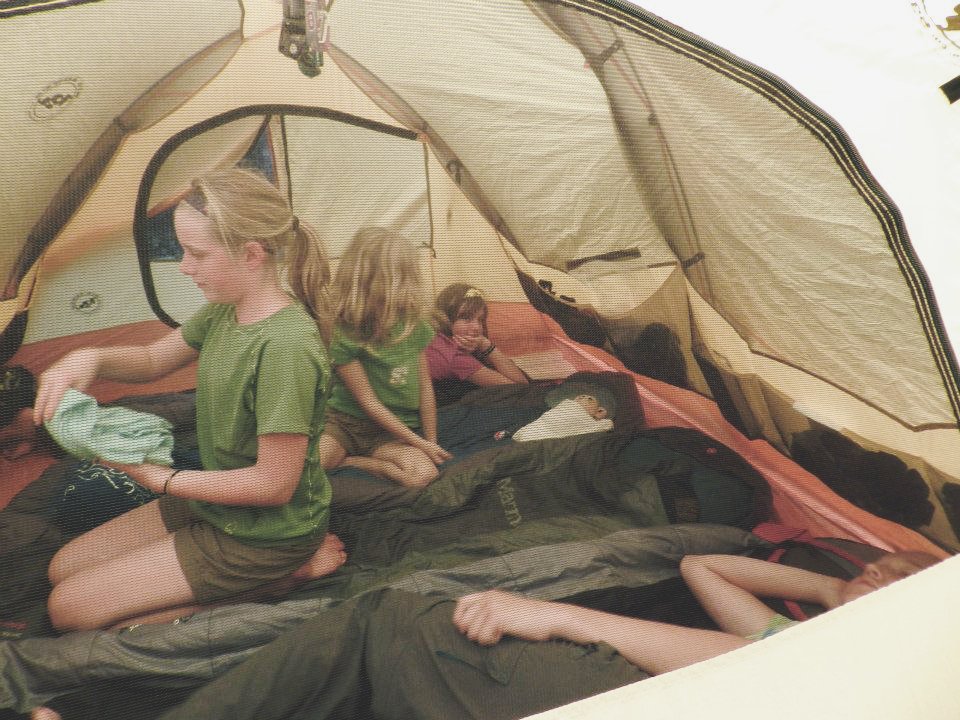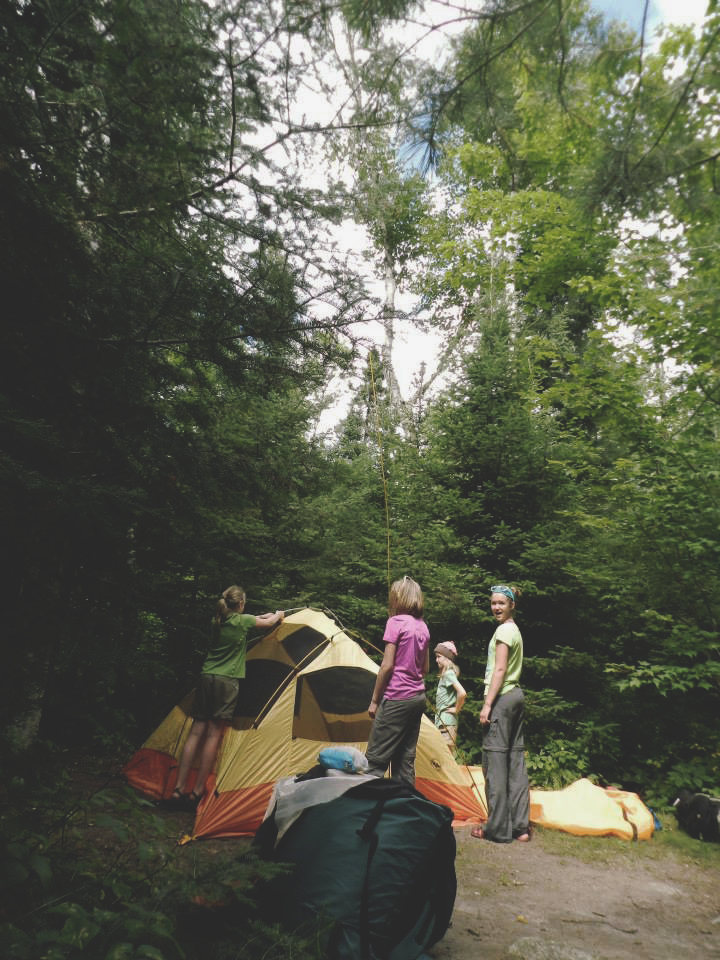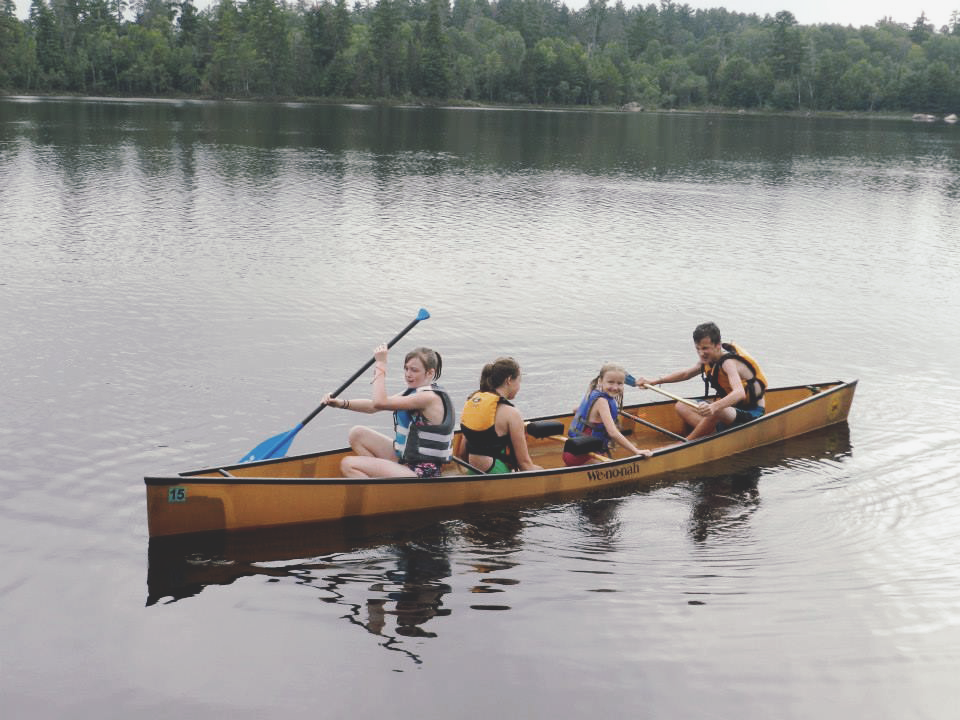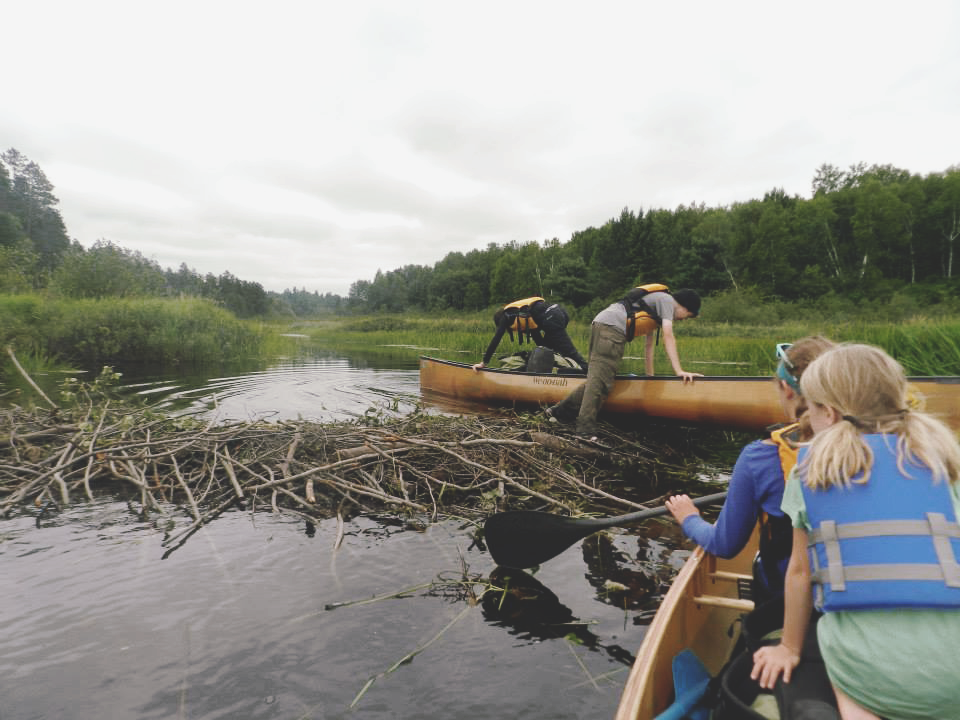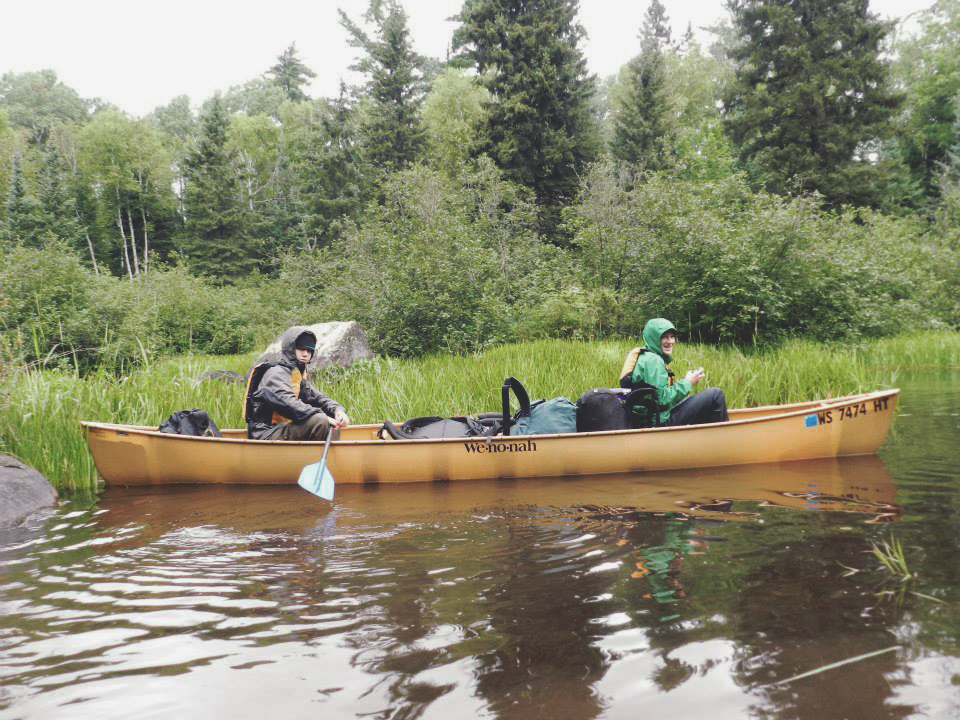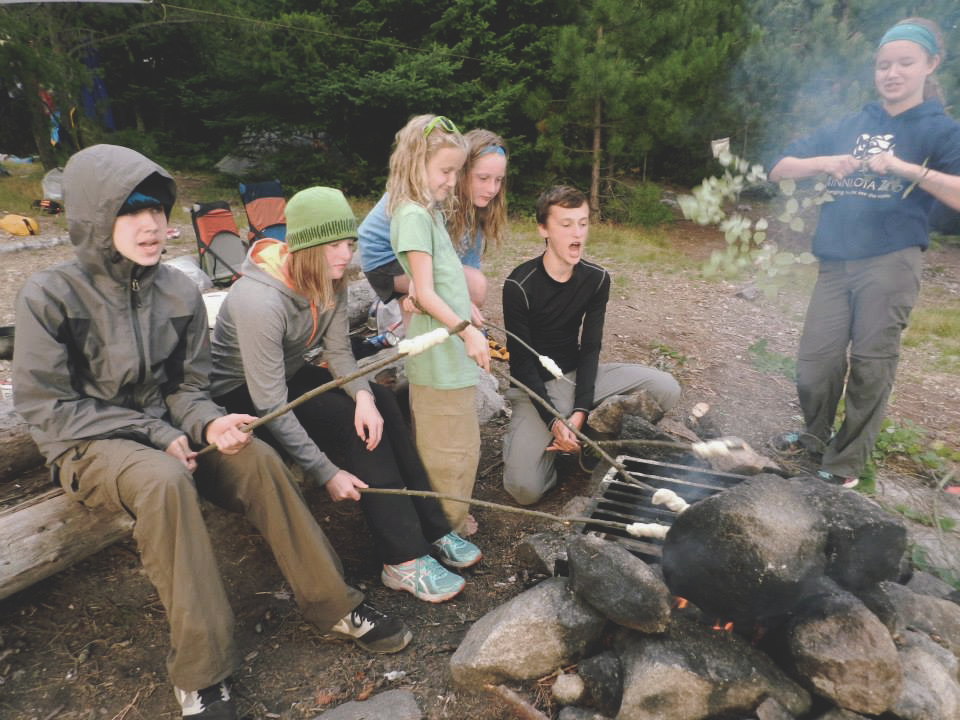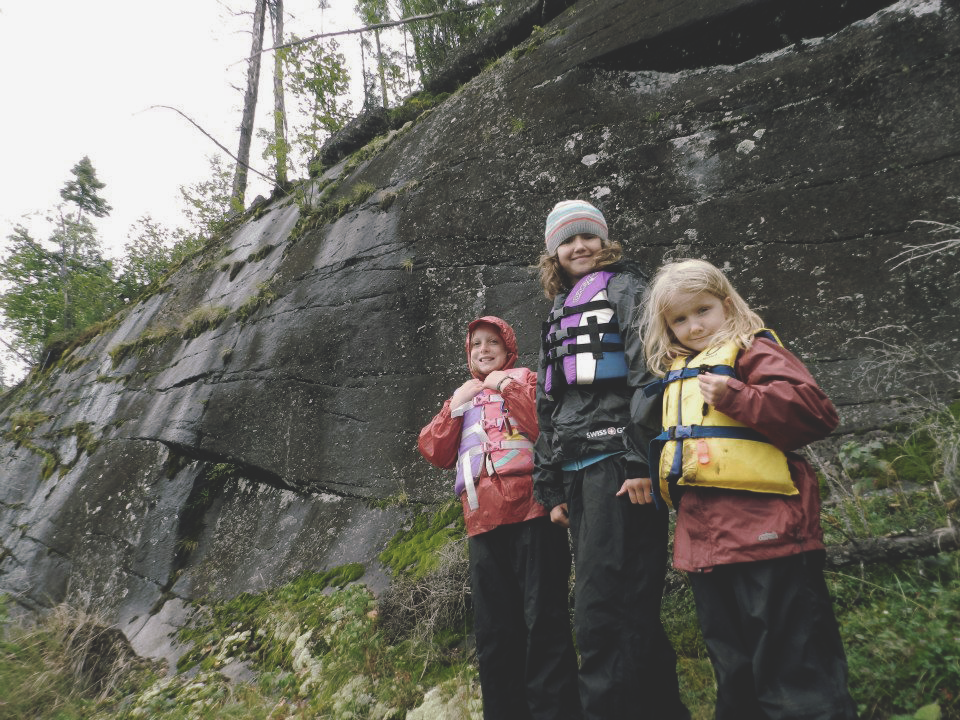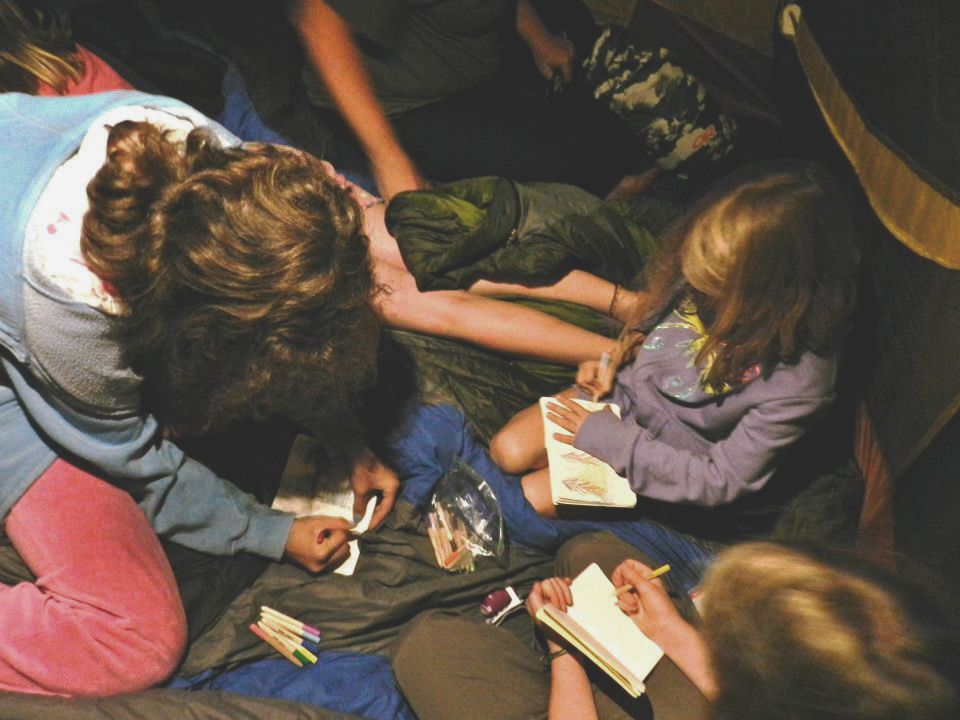Boundary Waters with Kids + Teens
Aug 12, 2021 | By Pam Wright
We paddled down the curvy Nina Moose River, 3 canoes filled with 6 youth and 2 adults. There, just around a bend, stood a cow moose and her calf, stunned by the surprise encounter. Both groups wide-eyed at the meeting along quiet waters. The canoes paused, allowing the moose a wide opening to depart which, after some brief gazing, lumbered off into the woods.
The Boundary Waters Canoe Area Wilderness (BWCA) in northern Minnesota can be a wonderful place to take a kids and teens. Filled with opportunities for wonder, exploration, observation and natural play, there are a host of ways to have a successful adventure together on a canoe trip.
However, it can feel intimidating. What age should you bring a kid? What will you see or do? How far should you go? How are you gonna keep everyone alive? Some of these questions are easy to answer, while others will depend on the needs of your kid or your family. We’ll provide some tried and true suggestions and tips to help you have a trip that will bring good stories for years to come.
We started taking our kids to the BWCA as toddlers. Over 15 years later, we’re still enjoying time in the wilderness together as they mature into young adults.
While we’d done a number of trips to the BWCA before kids, it was a new challenge to add our kids into the adventure. Our initial trips were not perfect, but we figured things out and our journeys became smoother. As the kids grew, they started to participate more and more in the trip preparations. In their mid-late teens they started to carry either a canoe pack or canoe and set up their own tents. They also helped out with cooking and camp chores. We tried to make the trips kid friendly and consider everyone’s abilities and interests.
So…what are some easy ways to make your canoe trip kid-friendly?
Boundary Waters kid crew ready to head north at Moose Entry Point. Packed for fun!
Keep the itinerary flexible. This is probably our biggest tip for setting up success. Plan really low mileage with younger kids and babies. Teens can handle more distance, but consider their level of experience and interests. Campsites are first come, first served, so you can be flexible and camp at any open site. Ask the everyone what they’d like to do be it swim, fish or read a summer novel.
Choose to basecamp. The easiest way to start is stay one lake and set up camp. Some entry points are right on the water. No portaging of gear is required. Just put the boat in the water and find a campsite.
Involve the kids in planning. This is a great way to get kids on board with the idea of a remote trip. Younger kids may want to choose their own stuffed animal or book to bring. Teens can help figure out games, snacks and food.
Allow for creativity! Most everyone will enjoy using their own small, blank journal with mini colored pencils or gel pens. On one of our trips, we provided a writing or drawing prompt at the end of the day that the the kids could do inside their tent. It was a nice way for everyone to wind down and reflect.
Indulge in great snacks or food. We carry a bit more food on trips with kids and teens. Cooking over the fire provides a fun experience for everyone. One trip we made monkey bread, another time we made cinnamon twists on a stick. We also bring a variety of savory and salty snacks - some healthy - some, well, not so much.
Make up silly contests. Have a rock-bowling contest. Set up a pile of rocks and “bowl” using a single rock. Bring small flotation toys and make up water races. Winner gets a handful of jelly beans, some stickers or a foot rub.
Let kids navigate. Let kids learn to read a map and help find campsites, portages and assist with route direction. Let them test out the compass and get used to identifying the four cardinal directions. If they’re wrong, ask good questions to help them discover the right answer. Teens are pretty capable of learning to read a map and may enjoy having their own set of maps to help navigate with.
Let everyone paddle. We always carry a light, spare paddle. This is primarily for safety, but also provides our kids an opportunity to paddle, even if it’s brief. Our teens started paddling their own canoe around the age of 13. If you can, practice near your home first so that everyone can learn a few strokes and build confidence before the trip.
Bring hammocks. This is one of the best pieces of gear we bring on trips with kids. We usually carry two or three and the kids enjoy time reading in them, relaxing or hanging with a friend. The youngest kids turn them into swings.
Bring comfortable clothing and shoes. Everyone should have a rain jacket and rain pants. Even in the summer, nighttime temps can still be cool and a rain gear doubles as added warmth. Check out our suggested packing list for kids and teens in our resources below. Test paddling and camping shoes before your trip so that kids don’t end up with blisters. Close-toed sandals like Keens or hiking shoes are great for paddling. They will get wet, but will be grippy enough on slippery rocks along portages. Lightweight crocks or athletic shoes are a nice, dry option for around camp.
Look for discounted gear or borrow gear. Outfitting kids and teens for a canoe trip can add up quick. We searched for discounted gear online or sales on social media camping groups. When the kids were young, we had them use their school backpacks to carry stuff like rain gear, extra clothing and a special toy or book.
Invite a buddy. Some of our trips included the kids friends. The kids took turns inviting a friend along on our adventures. Less complaining and more cooperation. Need we say more?!
Host a skills day. Before we go on a trip, we have a skills day in our backyard. We practice activities such as setting up tents, lighting a fire (and fire safety!), filtering water and carrying packs or canoes. We also head out to a local lake to show some canoeing basics. We make it fun and hands-on. Plus, it’s a great opportunity to test our gear and make sure everything is in working order (which you’d do anyway before a trip, right?!).
What about babies and toddlers? We started bringing our kids to the BWCA as toddlers, after we had done some successful car camping. This helped us worked out some kinks and take the next steps towards camping in the wilderness. For our first family BWCA trip, we still had one in diapers and packed out all of the diapers (bag them in big zip locks and place in a dry bag - add a little baking soda for odor). We’ve seen others successfully use cloth diapers. We kept our milage low and some of our at-home routines the same. Naps sometimes happened in the canoe, in the tent or in the child carrier. Snuggled between us, we found our kids slept pretty well with full days exploring. Again, we recommend being flexible and if something changes in your plans, that’s ok. Just try to go again another time.
Taking kids to the Boundary Waters can provide some amazing memories that will last a lifetime. It will take planning and flexibility, but in the end it can be a great bonding experience, unplugged in one of the most beautiful places in Minnesota.
RESOURCES
Download our suggested packing list for kids and teens ages, 3-18.
Choosing the best life jacket for kids.
Choosing the best life jacket for teens.
Boundary Waters Canoe Area planning maps are helpful in getting an overview of the wilderness routes and entry points.
Going to the BWCA requires a permit for all visitors which can be found online.
List of outfitters in Ely, Minnesota who can help with planning, full or partial outfitting, route recommendations and lodging.
List of outfitters in Grand Marais, Minnesota who can help with planning, full or partial outfitting, route recommendations and lodging.
Outfitters in Tofte, Minnesota who can help with planning, full or partial outfitting, route recommendations and lodging.
Superior National Forest information about the Boundary Waters including leave no trace practices.
Older kids take the canoes out for an evening paddle in a quiet bay by our campsite. Lake Agnes, BWCA.
Disclaimer: Some of the information we provided may not be up to date or accurate. Your safety is your responsibility and you should research and plan before heading into a wilderness area.
